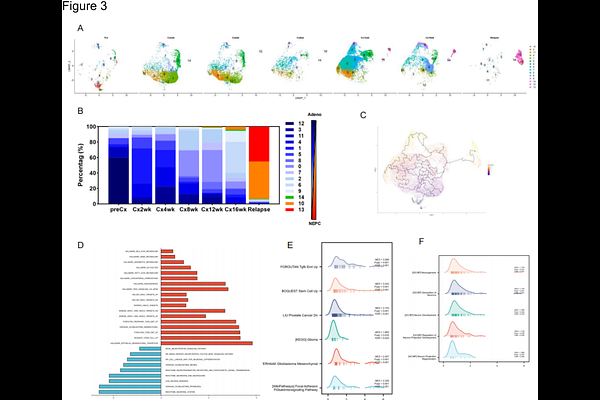Longitudinal single-cell analysis reveals RUNX1T1 as an early driver in treatment-induced neuroendocrine transdifferentiation

Longitudinal single-cell analysis reveals RUNX1T1 as an early driver in treatment-induced neuroendocrine transdifferentiation
Ni, Y.; Lin, D.; Shi, M.; Lin, Y.-Y.; Xue, H.; Dong, X.; Liu, L.; Sar, F.; Wu, R.; Morova, T.; Haegert, A.; Bell, R.; Pang, X.; Classen, A.; Wang, Y.; Chen, J.; Volik, S.; Bihan, S. L.; Lack, N.; Ong, C.; Wang, G.; Zeng, H.; Collins, C.; Wang, Y.
AbstractTreatment-induced neuroendocrine prostate cancer (t-NEPC) is a lethal, castration-resistant subtype of prostate cancer. While t-NEPC typically arises from adenocarcinoma through neuroendocrine transdifferentiation after androgen pathway inhibition, the temporal dynamics and molecular drivers of this process remain poorly understood. Here, utilizing the first-in-field patient-derived xenograft (PDX) model of adenocarcinoma-to-NEPC transdifferentiation (LTL331/331R), we performed longitudinal single-cell transcriptomic sequencing (scRNA-seq) across seven timepoints spanning pre-castration to relapsed NEPC. Our analysis demonstrated 15 distinct cell clusters, including twelve adenocarcinoma clusters and two NEPC clusters (ASCL1high/FOXA2low and ASCL1low/FOXA2high clusters). Notably, we revealed a newly-discovered, early intermediate transitional cell state during t-NEPC development distinguished by epithelial-mesenchymal transition (EMT), stem cell-related, metabolically active, and HDAC-associated regulatory signatures. Analysis of this intermediate transitional cluster led to the identification of RUNX1T1 as a pivotal transcriptional regulator of NEPC transdifferentiation. Functionally, RUNX1T1 overexpression promoted AR pathway inhibition (ARPI) -induced NE transdifferentiation and increased resistance to ARPI treatment in prostate adenocarcinoma. RUNX1T1 knockdown reverses the NE transdifferentiation, inhibits NEPC cell proliferation and induces apoptosis, and cell cycle arrest. In summary, this study identifies a critical intermediate transitional cell state during t-NEPC development and reveals the heterogeneity of terminal NEPC, offering new insights into NEPC biology and emphasizing the importance of early intervention. Moreover, the discovery of RUNX1T1 as a key early driver active in both the initial and terminal phases of NEPC progression presents promising opportunities for therapeutic intervention.